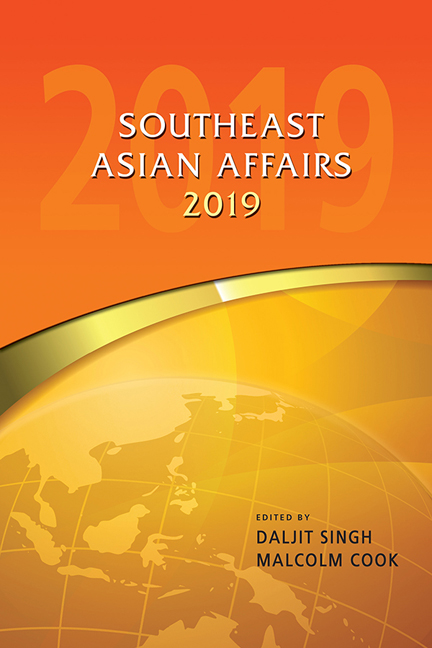Introduction
Published online by Cambridge University Press: 07 September 2019
Summary
The year 2018 was an eventful one for Southeast Asia, with many of its developments likely to shape those in 2019 and beyond. In 2018, the United States’ policy towards China, and by extension towards the region more broadly, crystallized into one of full-spectrum major power rivalry. The broader Indo-Pacific regional strategic concept is gradually replacing the long-standing Asia-Pacific one. It could well be that 2018 is seen as the year that the post–Cold War Asia- Pacific era ended.
There was better news on the regional economic front. The inelegantly named Comprehensive and Progressive Agreement for Trans-Pacific Partnership (CPTPP) was signed by eleven states and ratified by seven, while the ASEAN-led Regional Comprehensive Economic Partnership (RCEP) negotiations experienced what in diplomatic language is termed “substantial progress”.
A number of domestic developments in the eleven states of Southeast Asia also had wider regional implications. The Rohingya crisis in Myanmar demonstrated the limits of the ASEAN Way, as noted by Leszek Buszynski in his chapter on regional security. Malaysia's surprise election result and first change of government by the ballot box countered the narrative about the decline of democracy in Southeast Asia and brought Dr Mahathir back on to the regional scene. In the Philippines, the passage of the Bangsamoro Organic Law offers the best chance of addressing the long-running Moro insurgency in Muslim Mindanao and the safe haven this conflict has provided for local and regional terrorists.
The twenty-four chapters of Southeast Asia Affairs 2019, written by twentynine authors, reflect the diversity within the eleven countries that make up the region, and they provide timely analysis of the current political, economic and social developments at the regional level and in each country. Four themes in particular connect a large number of these chapters and reflect structural, rather than temporary, factors that will help determine the trajectories of the region as a whole and those of its eleven states for the foreseeable future.
The Indo-Pacific
The regional section of this edition features four shorter pieces looking at the development of the Indo-Pacific regional security concept in the United States, Japan, India and Australia. Brian Harding's contribution on the United States focuses on the role of strategic rivalry with China. Tomohiko Satake for Japan and Rory Medcalf for Australia address directly Southeast Asian and ASEAN's concerns with the Indo-Pacific, particularly the place of ASEAN in the concept.
- Type
- Chapter
- Information
- Southeast Asian Affairs 2019 , pp. vii - xviPublisher: ISEAS–Yusof Ishak InstitutePrint publication year: 2019



